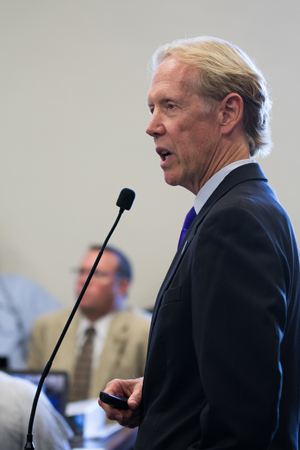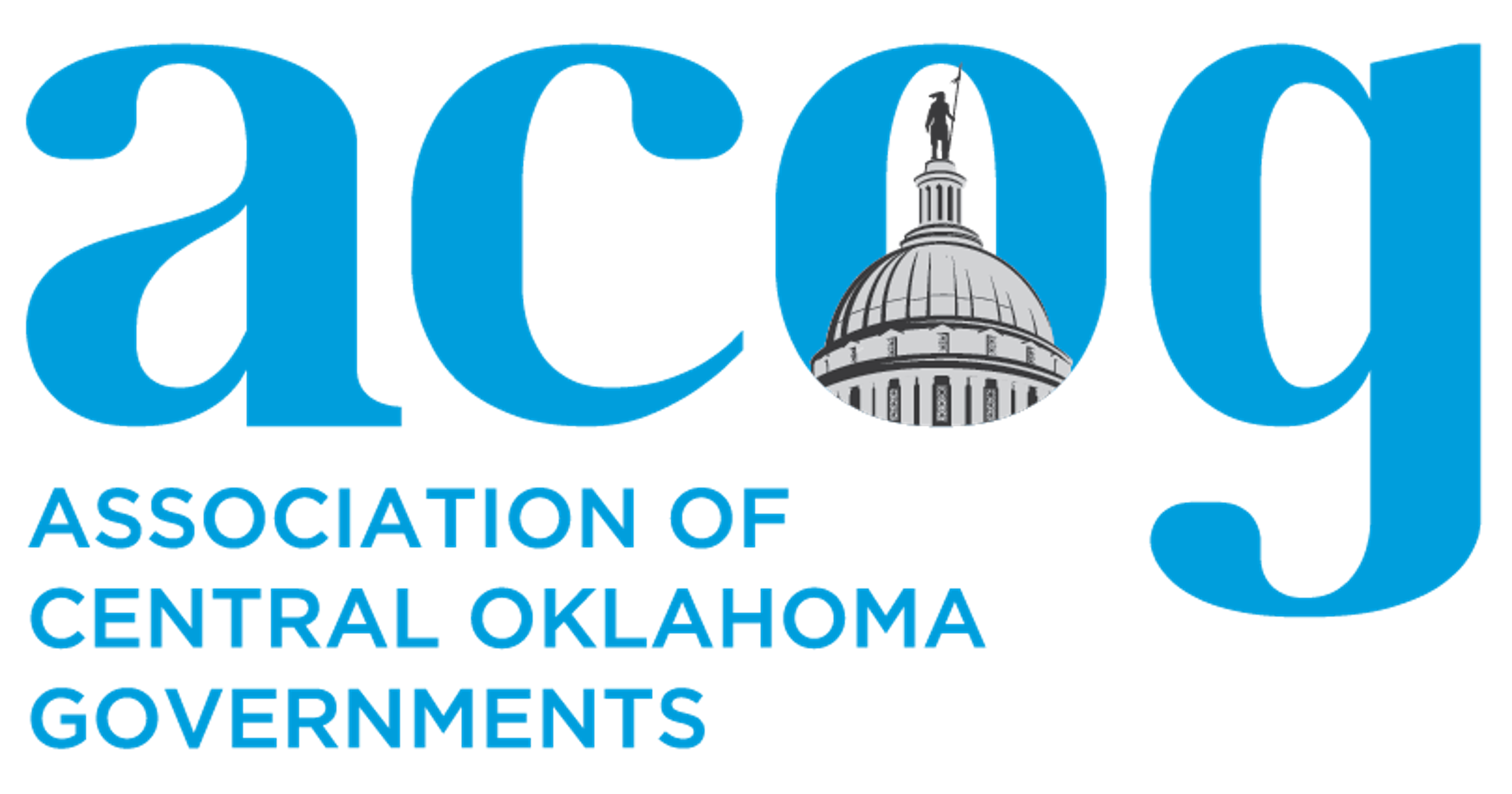
Mike Patterson, Secretary of Transportation for Oklahoma, speaks at an interim study investigating the expansion of passenger rail in Oklahoma.
The following article is a news release from the Oklahoma House of Representatives.
Although the Legislature is struggling to balance the state budget, mass transit rail service funding cannot afford to be cut, said tribal, city and regional officials at an interim study conference Wednesday.
Just the opposite, they said: It’s time to invest in expanding Amtrak service north of the Oklahoma City metro area to Tulsa or Wichita, Kansas, or both.
“The interest from the general public is certainly there,” Oklahoma City Mayor Mick Cornett said. “This may not be the best economic time to be designing grand plans for Amtrak, but certainly we cannot afford to go backward. If you start reducing your funding to Amtrak or to eliminate funding altogether, I think it would be virtually impossible to ever get it started again.”
The public presentation at the state Capitol was organized by state Rep. Forrest Bennett, D-Oklahoma City. Guest speakers were overwhelmingly in favor of Amtrak expansion in the state, although dollar figures were not discussed. A few lawmakers questioned the justification of Oklahoma paying a larger subsidy than Texas for the Heartland Flyer route, whether light rail might soon be replaced by unpiloted drone aircraft, and the degree to which the state should help the company’s own growth.
“I don’t want this to sound negative because I’m really intrigued by everything I’m learning here today,” said Rep. Roger Ford, R-Midwest City. “But when I look at the map … it almost seems to me that what we’re doing is asking Oklahoma and Kansas to financially support what would benefit the national network.”
“That is accurate,” Amtrak governmental affairs spokesman Todd Stennis said. “But let me explain it this way: Every state that operates intercity passenger rail service today, using us as the contract operator? They are contributing to that, just as the federal government is.”
Amtrak’s rail network primarily radiates out of Chicago in long stretches, passing through Newton, Kansas, on the north side of Oklahoma and into Dallas-Fort Worth to the south. Amtrak’s Heartland Flyer connects Oklahoma City to the heart of Texas, but the line falls far short of connecting to Newton and the Wichita metro area.
The situation creates a sort of cul-de-sac that has limited the line’s success, Stennis said. To test the viability of connecting Oklahoma City to the north, the company started running a bus between depots as a stopgap measure. Rider demand was strong, he said.
In the best possible scenario for Oklahoma, Amtrak would branch north to Kansas as well as to the northeast through Tulsa and into St. Louis, Missouri, said Evan Stair, president of the grass-roots advocacy organization Passenger Rail Oklahoma. He suggested paying for the idea with dedicated tax collections similar to Oklahoma City’s successful MAPS issues.
No one directly addressed his proposal, nor did attendees explicitly favor one extension to the exclusion of the other. Regardless of the choice, a rail expansion would also need more development of other mass transit modes at the terminus, said John Sharp, transportation director at the Association of Central Oklahoma Governments. Bus systems feed light rails, he said, which is why Oklahoma City officials are planning space for an intermodal hub near downtown.
ACOG’s research suggests the population and employment will grow by 40 percent in the next 30 years, forcing roads to support about 50 percent more automobile traffic. Passenger rail will not only foster job development in the immediate vicinity but also engender stronger business-to-business connections among cities along the line, as has been the experience with the Dallas Area Rapid Transit.
Neal McCaleb, Chickasaw Nation ambassador, said his tribe is willing to help fund an expansion because it would bring more customers to casinos and other tribal businesses. The Chickasaws have already made a commitment to significantly upgrade the Thackerville depot, he said.
Roy Williams, president of the Greater Oklahoma City Chamber, said his organization will actively oppose reductions in state and federal funding of passenger rail service. He said the city cannot afford to become like Austin.
“We spent two days down there hearing from them how bad things are,” he said. “Their Achilles’ heel is transportation, the one thing they did not plan. … In fact, they did the opposite. Their attitude was, ‘If you build it, they will come.’ So (city leaders) decided not to build it. They came anyway. That is going to be the thing that kills Austin one day, the inability to get around that metropolitan area. And that they can never afford to catch up.”
Staff Contacts
John M. Sharp
Transportation Planning & Services Director
(405) 234-2264
